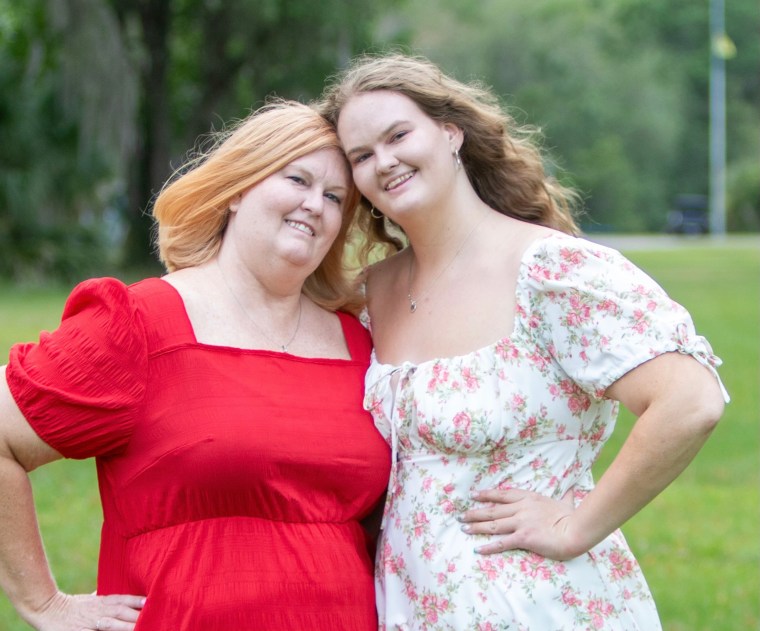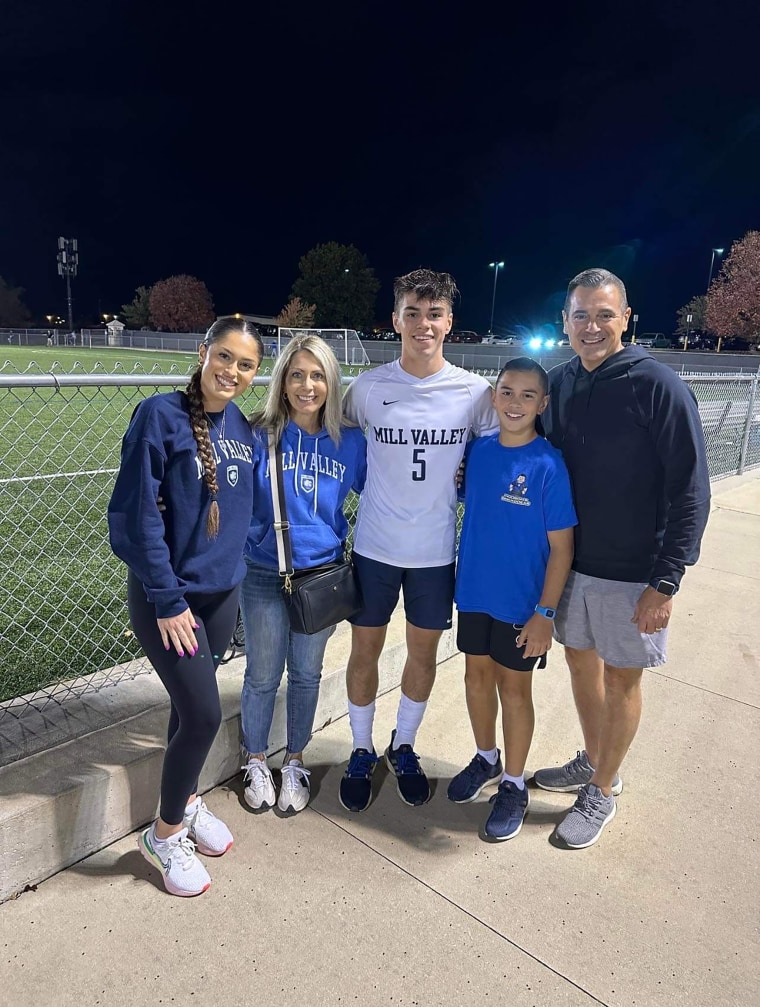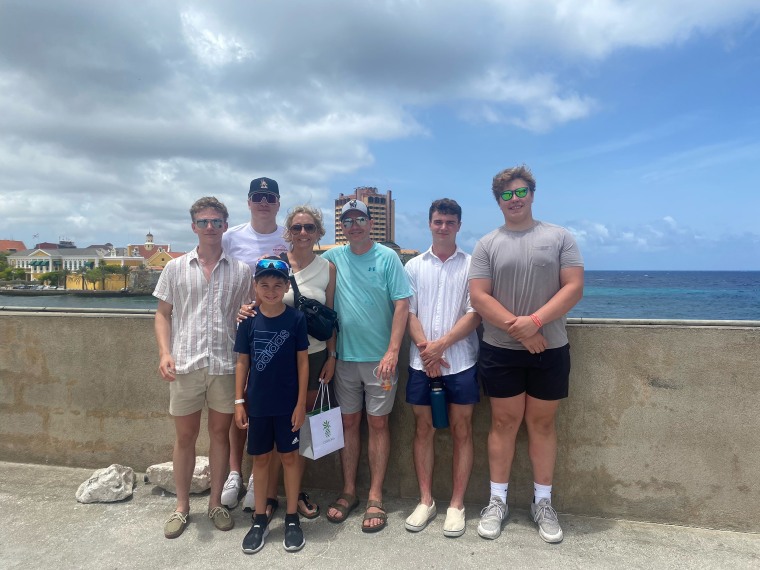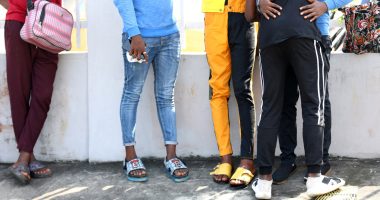Bricelyn Harrelson didn’t plan to spend six months applying to college.
The New Smyrna Beach, Florida, high school senior sent in seven applications starting last September and expected to know by now where she’d be enrolling this fall. Instead, she blasted out six fresh applications in the last two months — all to cheaper state universities.
Harrelson, 18, is one of millions of current and prospective college students whose application process has been derailed by the Free Application for Federal Student Aid’s botched overhaul this year. A series of glitches and formula errors — from its December launch to as recently as a week ago — has turned what was supposed to be a more streamlined process into a bureaucratic purgatory for applicants and admissions officers alike.

“I feel bad for the kids,” said Kerri Harrelson, Bricelyn’s mother. She said her daughter has heard back from all but two of her six latest schools, but that one of the ongoing FAFSA snags has held up potential need-based aid offers. “They started in high school with Covid, and now they’re going to start their college year with all this mess.”
FAFSA is a chokepoint for other forms of aid. Without knowing how much a student may get from the federal government, many schools and scholarship programs can’t put together offers of their own. Federal authorities say they’ll take a key step toward moving the process forward in mid-April.
While many students, like Harrelson, remain in holding patterns, others say they’ve already been forced into difficult decisions they hadn’t expected to make.
Moving money to pay tuition
Eyeing the FAFSA mess, Kelly Gainor decided to slash her 401(k) contributions almost in half this year to save money for tuition.
Her daughter, Kennedy, is still waiting for her federal aid information, but she’s already committed to her dream school, James Madison University in Harrisonburg, Virginia, to nail down campus housing. Without FAFSA, any potential merit scholarships are up in the air, leaving their household unsure how many loans they’ll need to take out.
“This stress level is at a whole new level for me,” said Gainor, who works as a contract manager for a health insurance company in Albany, New York.

She and her husband have a $25,000 college fund for Kennedy, their only child. But they’re worried it won’t go as far as they’d hoped and have begun moving some investments into more aggressive options. They’ve also shelved plans to buy a new car this year.
“It just feels very challenging to be put in a spot where you’re potentially taking on $100,000 worth of debt, but not even knowing exactly what you’re getting into,” Gainor said.
The Department of Education has been clearing a backlog since the middle of March. Of the more than 6 million FAFSA forms submitted this year, it had processed 4.3 million by March 25, though the agency has since flagged additional errors requiring some forms to be reprocessed.
I feel like we’re agreeing to buy a car or a house without knowing how much it costs.
Natalie Alvarado, Shawnee, Ks
The department, which has been providing regular updates and webinars to keep people informed, didn’t respond to requests for comment on the choices some households are making in the interim.
In a recent American Council on Education survey, 2 out of 3 college officials said they doubted they could process students’ financial information from FAFSA “within a few weeks.” Given the delays, many universities have pushed back accepted students’ decision deadlines from around May 1 to anywhere from May 15 to June 15.
Some college athletes’ families have also begun planning for financial fallout rather than wait around for aid information.

“I feel like we’re agreeing to buy a car or a house without knowing how much it costs,” said Natalie Alvarado, whose son, Roman, committed in March to attending MidAmerica Nazarene University in the family’s home state of Kansas, to secure his spot on the soccer team.
The family doesn’t know how much money may come through beyond the athletic scholarship the university is offering to cover half of Roman’s tuition.
“We have our own debt, and we know what that’s like,” Alvarado said, “but I know that he needs to attend school to get a good job. I know his dream of playing soccer, and I just want him to be able to fulfill that dream.”
Settling for safety schools
Olivia Maynard Payne, an Advanced Placement student from Lutz, Florida, who wants to study biology, committed to her last-choice school, the University of Southern Florida, because it was the safest financial choice.
Her mother, Ann Maynard Payne, is a single parent who relies on permanent disability payments to support Olivia and a grandson. To help save for college, Olivia has been working several part-time jobs up to 30 hours a week while attending high school. But the household was banking on FAFSA to help cover her college costs, and one of the widespread application issues has prevented them from signing the online form.

“This new algorithm has disrupted and caused so much anxiety for me, and especially Olivia,” Maynard Payne said. “She’s not happy. This is not her school.” But holding out for aid information while campus housing slots filled up wasn’t an option, she said.
Olivia got into Mercer University in Macon, Georgia; the University of Rochester in New York; and Massachusetts’ Wellesley College, each of which offered her merit scholarships that ranged from $9,000 to $29,000 a year. But all three are still out of budget, and until her FAFSA forms are processed, she can’t determine whether those schools or the government will offer her additional need-based support that could put them within reach.
So after qualifying for Florida’s Bright Futures program, allowing her to attend USF for free, Olivia ruled out switching her choice even if more money comes through.
“That would just stress me out more,” she said. “If I did hold out hope for that, and then they ended up not giving me nearly enough, it’d just be more disappointment.”
Shelving four-year plans for community college
Sherri Schendzielos, a mother of a blended family in Blaine, Minnesota, has four out of six children currently in or applying to college.
It’s like I just submitted information out into a black hole.
Sherri Schendzielos, Blaine, MN
Her eldest biological son, Jonah, 21, is a sophomore at Grand Canyon University in Phoenix, and her stepson Avery, 20, has one summer semester left at Hennepin Technical College in suburban Minneapolis. Blake, 18, her younger biological son, and Sam, 17, her younger stepson, are high school seniors both applying to college this fall.
Schendzielos, her husband, Eric, and his ex-wife each completed FAFSA forms for the four kids, all of which are listed as processed. But they have yet to receive a single financial aid package.

“It’s like I just submitted information out into a black hole,” Schendzielos said. “At this point, I don’t even know if we’re ever going to hear anything.”
Blake is already committed to play Division III football at Bethel University in Saint Paul. But Sam has opted to start at a local community college rather than join his brother at Bethel, where he was also admitted, due to uncertain finances.
“While he’s choosing still to go to school, it’s not his choice necessarily,” said Schendzielos.
She is an assistant high school principal and her husband works in IT. Together they bring in about $200,000 a year, and with a fifth child in their family who’s 10 years old, she said student loans and grants are essential to funding higher education in their household.
“I just am hoping something works out,” Schendzielos said. “I just feel like a failure not being able to have a solution to this.”
Source: | This article originally belongs to Nbcnews.com










